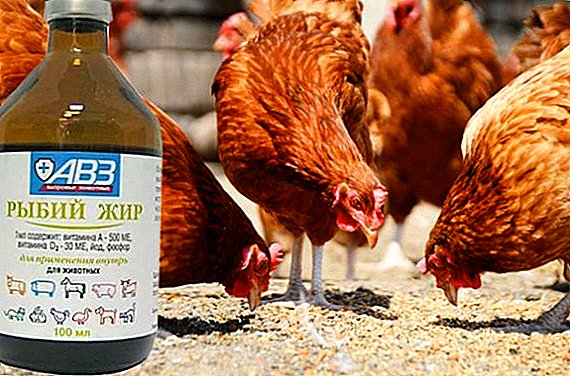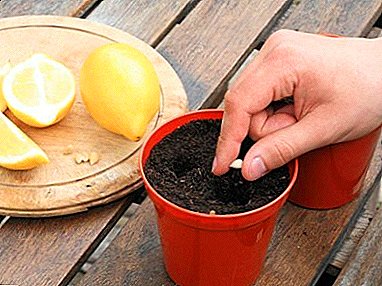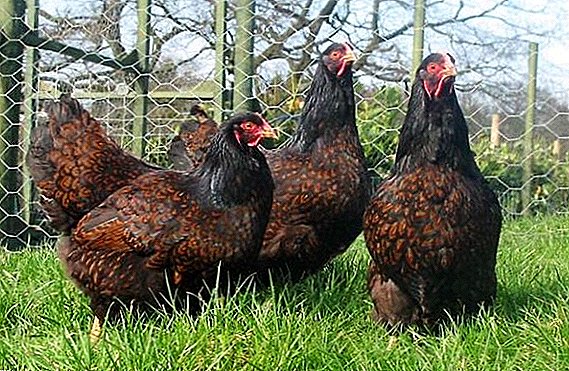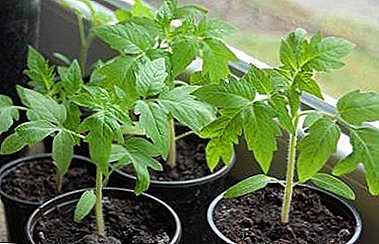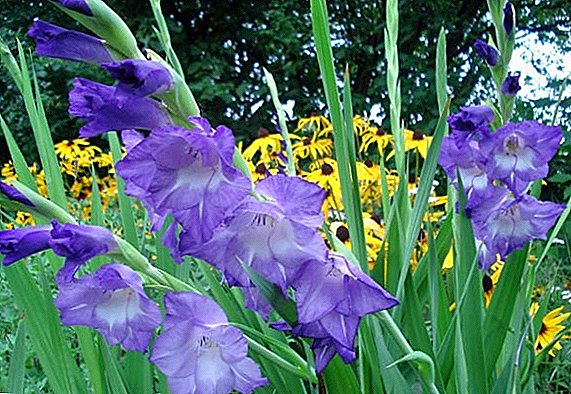 Gladioli are majestic and beautiful flowers. In order to grow them on your site, you need to know some techniques of plant care, as well as techniques that are used when planting it. If you do not have your own plot, gladiolus can be grown at home.
Gladioli are majestic and beautiful flowers. In order to grow them on your site, you need to know some techniques of plant care, as well as techniques that are used when planting it. If you do not have your own plot, gladiolus can be grown at home.
How to prepare the bulbs for planting
Before planting gladiolus, you need to carefully consider the plant bulb. Proper planting of gladioli often depends on how carefully you do this procedure 3 weeks before the landing. To do this, you need to clean the bulb from the framing husk.
Many wonder when it is possible to peel gladiolus. Carefully inspect the bulbs. If you notice spots, it means that it is infected with bacteria and should be treated. It is necessary to cut out the places that are struck with a sharpened knife, cover them with greenery and allow to dry before a crust. It is better to discard the bulb if it has irreparable damage, or it is completely withered.
 It is necessary to carefully try to remove the leathery film from the germ and arrange the plants in one row on the flat-shaped containers. Leave 18 days before planting gladioli at room temperature. If the plant was stored before in a cool place, then this temperature will allow it to wake up faster.
It is necessary to carefully try to remove the leathery film from the germ and arrange the plants in one row on the flat-shaped containers. Leave 18 days before planting gladioli at room temperature. If the plant was stored before in a cool place, then this temperature will allow it to wake up faster.
Did you know? According to legend, the gladiolus got its name from gladiatorial fights.
After the deadline has passed, you can safely proceed to the pre-treatment of plants. To do this, dilute potassium permanganate in water and soak the bulbs in this solution for 30 minutes. After that, put a cotton layer in the flat container, which was previously well moistened with water. Place the bulbs there for 3 days. As the water dries, it is necessary to periodically wet the cotton wool again. If during this time you have noticed the appearance of the roots, then this means that wonderful gladioluses are ready for landing in the ground.
Rules for planting gladiolus bulbs in open ground
There are certain rules for planting gladioli in open ground.
 A few weeks before planting, plants need to be disassembled by size, discarding rotten and diseased specimens. Bulbs that are large, it is better to plant separately, since subsequently a strong flower will grow from them, which will shade the smaller “relatives”, thus depriving them of all the nutrients.
A few weeks before planting, plants need to be disassembled by size, discarding rotten and diseased specimens. Bulbs that are large, it is better to plant separately, since subsequently a strong flower will grow from them, which will shade the smaller “relatives”, thus depriving them of all the nutrients.
Did you know? Processed and cleaned bulbs will absorb more nutrients than those that have lost it..
After pereberete, remove dry scales in such a way as not to harm the body of the bulb and young shoots.
Optimum landing time
Planting is carried out in spring, from the end of April to the first decade of May. It is during this period that the soil at a depth of 12 cm warms to 10 ° C. If the earth has not yet warmed up, it is better to wait for the optimum temperature. It should be remembered that it is impossible to do with spring gladioli tubers:
- If you plant the plant early, then such actions can lead to a delay in flower development.
- Late planting is also not discussed, as it may adversely affect the plant.
- It is also necessary to take into account all the climatic features of the area where the landing will take place. Remember that if you plant gladiolus in wet soil, it will kill the tuber.
Site selection for planting
If you advance responsibly in advance to the question of where to plant gladiolus in the country, then you will certainly succeed.

Important!The place where you want to plant your gladioli should be protected from the cold wind, as well as sunny.
Try to make a bed in such a way that from the north side it has “protection” in the form of trees, shrubs or a fence. Gladioli require a lighted area, which will be protected from the wind, as it can break the tall stem of a plant. Therefore, it is best to prepare the landing site in the autumn. The territory should be flat, for this you will need a rake. The flower bed should be left for 2 weeks, then you can proceed directly to planting.
How to prepare the ground for planting
The soil should be well dug up and prepared by adding fertilizers for planting. Do not forget to remove all weeds from the land before planning to grow a flower. If the place you have chosen is too low, you must make a high bed, because gladiolus bulbs do not like stagnant water and may die.
Did you know? Neutral or slightly acidic environment of chernozem, sandy loam and loam can be considered an excellent soil for growing a flower.
The plant is a lover of loose soil, so if your area is clayey, then just pour peat, sand and humus in the ratio of one to three.
Scheme and depth of landing
 How deeply the gladiolus needs to be planted depends on the size of the tuberous bulb. If it is large, then the plant should be planted to a depth of 10 cm, if the average is 7 cm, and the small onion is best planted to a depth of 2-3 cm. It is necessary to take into account the composition of the soil, as the clay can lead to slow growth, and sandy - to the difficulties of landing.
How deeply the gladiolus needs to be planted depends on the size of the tuberous bulb. If it is large, then the plant should be planted to a depth of 10 cm, if the average is 7 cm, and the small onion is best planted to a depth of 2-3 cm. It is necessary to take into account the composition of the soil, as the clay can lead to slow growth, and sandy - to the difficulties of landing.
How to care for gladiolus shoots
Gladiolus is a graceful plant that gives inflorescences with colorful flowers and leaves, shaped like a sword. In order for you to end up with healthy flowers on your plot, you need to properly care for them after you have landed.
Watering, fertilizing and loosening the soil
First of all, you need time to water the gladiolus. In spring, the soil is wet, and watering the plant depends on how necessary it is. The amount of watering should be necessarily increased when the flower stalks are formed (15 liters per 1 sq / m). This stage you can easily determine by how many leaves have already appeared. If there are 3 or 4 full leaflets, you can safely increase the dose of watering. A lot of water is required during the flowering of gladiolus. After watering, you need to try to break through the ground, and the flower itself to pile up.
Fertilizing remains an important component of flower growth. A portion of fertilizer should be applied at 4 and 8 weeks after planting. Top dressing is better to choose nitrogen. On 1 sq / m of soil you need 30 grams of fertilizer. If the site itself is already rich in nitrogen, the portion should be reduced by 2 times. After the appearance of the first buds, the soil should also be fertilized.
Important! Before you add fertilizer to the soil, you must water it.

Weeding and mulching
It is worth paying the lion's share of attention to mulching and weeding the soil. They will help preserve moisture, as well as ventilate the soil with small layers of humus and peat. They should penetrate 5 cm into the soil.
Did you know? With the help of the simple method of mulching, you can completely get rid of pesky weeds that interfere with the growth of gladiolus.
This will provide the plant with decent and very good care.
How to care for adult flowers
Care for grown flowers is not difficult. You need to monitor the soil and the general condition of the gladioli. As well as seedlings, an adult flower will need to be well ventilated and watered.
Watering the soil
In mid-July and early August, gladioli bloom. During this period, you should especially try to keep the soil moist. If it is raining outside and the weather is cold and windy, then watering the plant should be reduced to avoid fungal infections.
Important! If you do not fertilize gladioli, you can feed them several times during the season. To do this, use a solution of nitrophoska or "Kemira".
Garter and hilling plants
It is necessary to tie up the plants when they begin to grow. You will need pegs. You can do without the garter, but simply to pile up the plant by about 12 cm, in order to make it sustainable.
 If you are wondering if gladioli can be cut, then experienced gardeners answer that you can, just try not to cut the bottom sheets. In order for the normal development of the bulb to take place, simply leave 5 leaves.
If you are wondering if gladioli can be cut, then experienced gardeners answer that you can, just try not to cut the bottom sheets. In order for the normal development of the bulb to take place, simply leave 5 leaves.
Fight against diseases and pests
There are few pests in gladioli, but they are still there. Slugs have a negative effect on the appearance of the plant, as they are able to eat half the leaves. They can also gnaw tubers and ruin a flower.
To avoid this, you need to weed out the weeds, so they take half the nutrients and help slugs to multiply. Preparations such as Thunderstorm and Meta will help achieve good results in pest control. Processing should be done no more than once every 20 days.
Important! Drugs are toxic, so it is best not to use them in places where pets or children live.
Salt and mustard powder will help you, as they affect the delicate skin of slugs and prove to be a serious obstacle in the way of pests.
 Dark beer can also help. Liquid is poured into shallow bowls and buried in the soil so that the edges are at ground level. Slugs are delighted with beer, therefore, having come to the smell, they find their last refuge.
Dark beer can also help. Liquid is poured into shallow bowls and buried in the soil so that the edges are at ground level. Slugs are delighted with beer, therefore, having come to the smell, they find their last refuge.
Medvedka is another serious pest of gladioli, as it gnaws not only the roots, but also young stems. Water can be poured into the container. When the pest is thirsty, it will fall into a water trap.
Did you know? In the Middle Ages, crushed gladiolus bulbs were added to flour when baking bread.
You can also dig into the ground granules "Medvetoksa" 50 cm. Having eaten the bait, the pest will die.
As for diseases, there are about 15 species of them, which are caused by microscopic fungi, viruses, bacteria. It is also known that no methods of struggle will help you prevent an irreversible process if it has already begun. Therefore, it would be best to initially monitor the condition of the plants and follow the rules of agricultural technology.
When to dig and how to store gladioli
In late autumn, when the gladiolus ottsvetut, you need to dig them out of the soil and carry out a thorough cleaning from the roots and earth, then separate the bulbs from the children and dry them thoroughly. Babies and tubers should be kept separate.
 Storage of gladioluses best takes place in a cold dark place. Also, they should be decomposed into paper bags of several pieces. Regular airing and checking will help you prevent rotting.
Storage of gladioluses best takes place in a cold dark place. Also, they should be decomposed into paper bags of several pieces. Regular airing and checking will help you prevent rotting.
In the middle of February, the bulbs will need coolness and a dim light, as they have a dormant period coming to an end, and they release arrows. In this form, they will be before landing in the ground.
If you have asked questions about what can be planted next to gladiolus and what combines gladioli on a flower bed, then these plants will best grow with tulips or daffodils, as well as with peonies and hydrangeas.
Important! Do not try to plant gladioli with dahlias, as these two plants will compete with each other.
As you can see, the departure and disembarkation of gladioli will not take much of your time. And with a great desire, you will certainly be able to plant these wonderful flowers!





